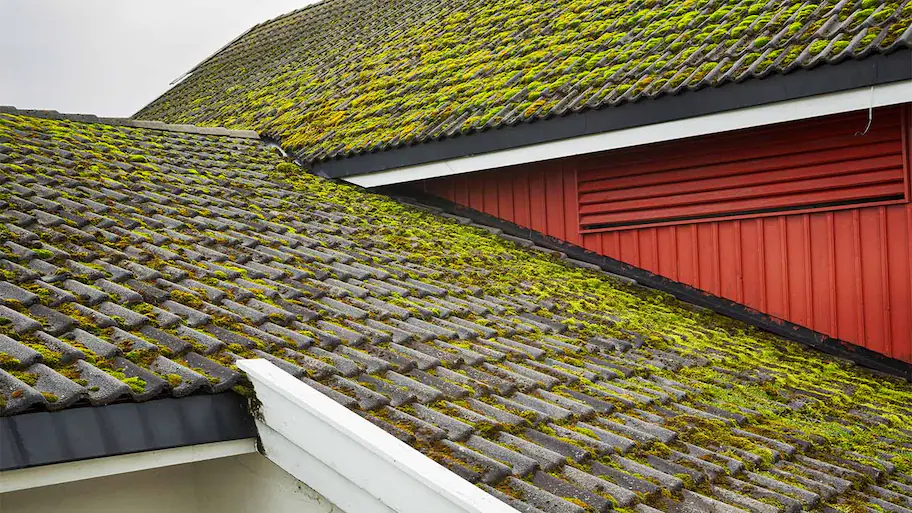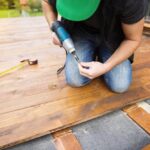Is it a bad idea to leave moss to grow on your roof? The likely temptation in that scenario is to think that it’s harmless; after all, it’s only a plant.
The only valid reason to leave moss to grow on your roof is if you find it aesthetically pleasing. However, roofing experts would advise against it. With that in mind, it’s essential to note that anything excluded at installation is an enemy to your roof.
If you are doubtful, a roofing contractor in Lubbock could help you navigate having moss on your roof. There are various reasons why having moss on your roof is bad. It’s not poisonous, but it has zero benefits as well.
This article will explore facts about moss and why it isn’t suitable for your roof.
What Does Moss Do To Your Roof?
You can do all the recommended things to prevent moss growth on your roof, but they won’t work when the rainy season comes. Some moss would still grow. Eventually, the only solution is to schedule moss removal.
Moss removal experts do it while striving to preserve your roof. You risk damaging your roof if you do it yourself unless it’s in your job description. The best you do is find moss growth preventive measures.
Arranging to have moss removed from your roof as soon as it starts to grow is essential for various reasons. Moss:
Harbors Moisture
Moss is well known for its ability to retain moisture. Its existence is a result of humidity sure as well. Air and sunlight should dry moisture and water settling in the water. When a roof has moss, it gets in the way of evaporation, allowing the moss to thrive.
Moisture trapped by moss softens porous roofing material making it weak and vulnerable to the elements. The result is that the life span shortens, and you have to pay for replacements.
Damages Installed Shingles
It takes only about six weeks for moss to grow. Moss loosens shingles and causes them to grow gradually.
It gets under the shingles as it grows, pushing them up and spacing them. Additionally, moisture damage already happening leaves you no choice but to start looking for a replacement.
Leads to Holes and Leaks in Your Roof
Sometimes you might not notice that moss has already invaded your roof. When you realize it has caused shingles to shift, you already have holes and leaks in your roof.
Also, the moisture held by mold may condense and then leak through your roof. You can catch this issue early through routine maintenance.

Creates a Haven for Pests
Moss is the ideal habitat for insects, pests, and rodents, especially those who prefer moist conditions. Insects and pests are not necessary to pollinate moss since its self-pollinating. They come for the inviting scent produced by moss.
The result is that you might find yourself dealing with an insect infestation. It gets worse if you have lush vegetation around your home.
Adds Extra Weight on Your Roof
Manufacturers do not account for permanent extra weight in productions. Moss grows fast and retains water that overwhelms or roof. A mat of moss carries a lot of weight.
Also, the roof could be harboring foreign wright since it is porous and holds water. Additional weight on a roof eventually leads to damage to the ceiling besides the roof itself.
Will Infringe In Your Curb Appeal
Where there is moss, there is likely to be mold. Mold is a whole other problem that is more serious than most. Homebuyers frown upon houses with moss growing in them.
You won’t have problems if potential house buyers are looking for a house with a moss aesthetic. It will cost you to sell your home, or you will have to accept a lower value on your house.
Eventually Attracts HOA Fines
You have to be cautious about allowing moss to grow in your house. Unless your neighborhood is a moss-accommodating one, you will likely receive requirements from your Home Owners Association (HOA) to pay fines.
Creates a Slippery Roof
Installing or repairing a roof is already dangerous as it is. Moss makes it extra slick and slippery. For this reason, it’s essential not to attempt climbing your roof to remove the moss yourself. Consider inviting an expert since they have the right equipment.
Catch mold growth early, and you won’t have problems getting rid of it. Although you can’t get rid of moss completely, there are things you can do to slow moss growth down.
Practical Things You Can Do To Help With Your Moss Problem
These are progressive times, so the method you choose to apply should not cause harm to the environment. So harsh chemicals are out of the question. You can:
- Prune the trees and branches around your home
- Unclog and clean your gutters to eliminate moisture that harbors moss growth
- Schedule regular roof inspection to spot early moss growth
- Applying a water-based zinc treatment on the roof
- Using copper treatments which additionally keeps pests and insects off your roof
Unless there is severe damage to your roof, you don’t need to replace it because of moss. Your roof could only be missing out on the action from the sun, which you could easily remedy.
Understanding the climate you live in could also help you prepare to deal with moss. Refrain from pressure washing or using home cleaning products to remove moss from your roof. Something like pressure washing could drive moisture deeper.
Final Words
Only leave moss to grow on your roof from a personal pint of preference but brace yourself to incur roof repair costs. Moss causes many issues in your roofing system, and consulting a roofing professional would help you escape those issues.
Roof damage from moss is gradual, and there is no reversing it once it occurs. Tend to moss growth as soon as you notice it. Stay safe and don’t remove moss yourself, especially if you don’t have the right equipment.






